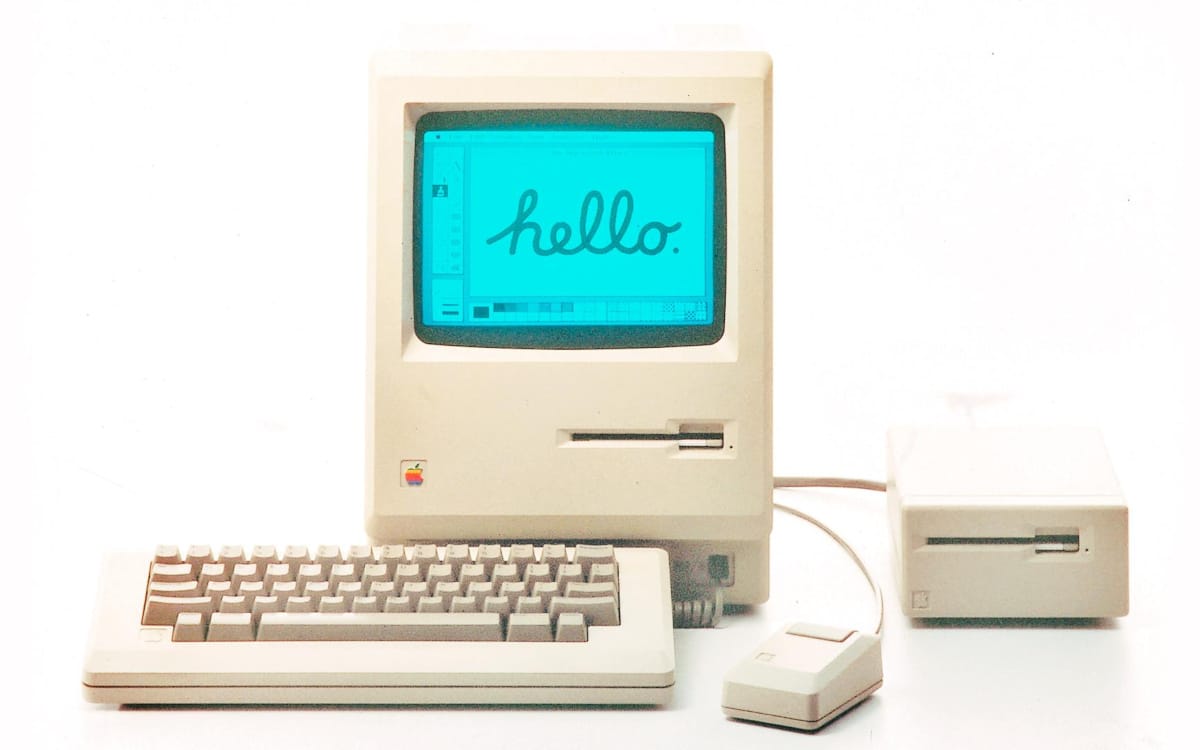
On January 24, 1984, Apple unveiled the Macintosh, its first desktop computer. This product has largely contributed to making computing a more mainstream product, thanks to a new, more ergonomic interface. On January 24, 2022, the computer turns 38. A good opportunity to look back on the innovations he brought.
Two weeks ago, we reported in our columns that the first iPhone was celebrating its 15th birthday. Yes, 15 years ago, Steve Jobs went on stage to present the smartphone that was going to change telephony (and a little the face of the world at the same time). We took advantage of this anniversary to discuss the major innovations it brought: the multipoint capacitive touch screen and the gestures that we all use today, a simple and intuitive interface, developed to be used with the finger, a browser greatly improved web, a geolocation application for easy navigation, etc.
Read also – Apple is preparing a Keynote in the spring of 2022: what to expect?
During the presentation of this smartphone, Steve Jobs recalled the major steps of Apple that preceded the iPhone. The iPod of course, which changed the way we consumed music (use which continued to evolve thanks to the iPhone and its permanent connectivity). But also the Macintosh. The latter was unveiled on January 24, 1984 in Cupertino by the emblematic boss of the firm. He therefore celebrates today his 38 years old.
The Macintosh was the first computer made for everyone, here’s why
Like the two other products mentioned, the Macintosh has also made a great contribution to modern computing. What exactly are the advances made by the Macintosh? Let’s review them:
- The Macintosh is the first all-in-one Of the history. It integrates in its frame the screen, the motherboard and the floppy disk drive.
- The Macintosh was the first computer easy to carry. During his presentation, Steve Jobs carried it in a bag. It has a handle on the top to easily lift and put it down. It is also quite light.
- The Macintosh is not the first computer with a window system based GUI, but he is the one who popularized its use. This interface is based on the complementarity between the windows, the icons, the menus and the pointer. A system then called WIMP. The first Apple computer to use such an interface was Lisa, launched a year earlier. This first version of Apple OS largely contributed to the development of Windows.
- The Macintosh is the first computer to minimize the number of slots for components and peripherals. Apple wants the Macintosh to be easy to approach for all users, even those who are not familiar with computer tools.
- The Macintosh was the first computer equipped witha mouse with one button, while the competition relied on pointers with two or three buttons. Its designers claimed that all commands could be performed with a single key. Like the interface and connectors, the simplification of the mouse aims to appeal to people who are resistant to computers.
The first Mac was a good commercial success during its first months on the market. And this thanks to a skilful communication campaign: previews organized by journalists; an advertisement produced by Ridley Scott and broadcast during the SuperBowl (which was mocked by Epic Games when Apple banned Fortnite from the App Store); and a beautiful staging during the presentation in Cupertino.
Because Steve Jobs already had in 1984 a skill of showman. Some strong messages for journalists. A product release similar to the first MacBook Air (which the boss of Apple had brought on stage in an envelope). And a little joke programmed with the voice synthesizer of the Macintosh.
Also Read – Apple’s First-Ever Computer Is Up For Sale, Bidding Expected To Surpass $500,000
Despite this marketing ploy, the Macintosh will not be very successful in the long term because of its limited RAM volume, missing connectors and monochrome screen. It will be quickly replaced by other models, in particular the Macintosh 512K, offering more possibilities for programmers.